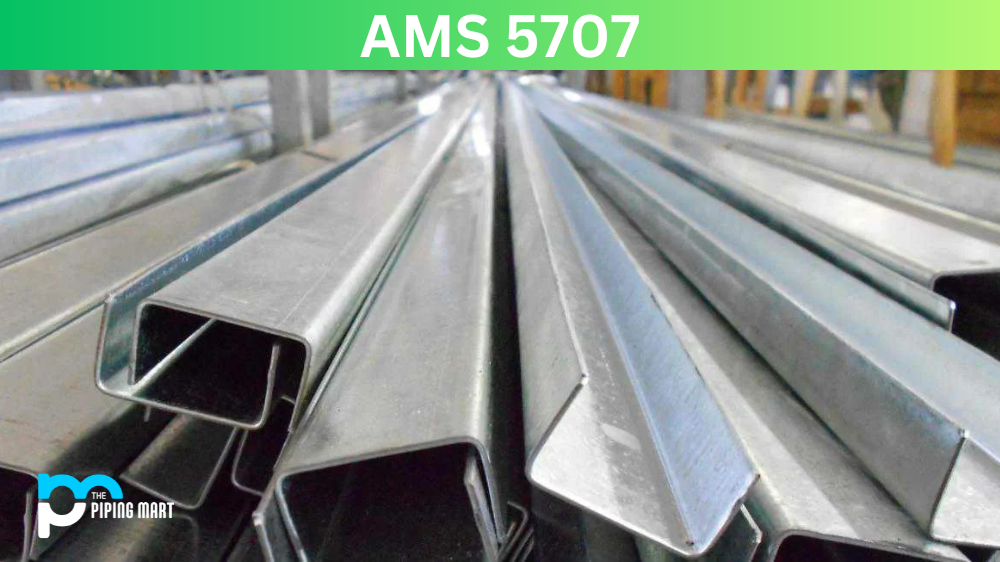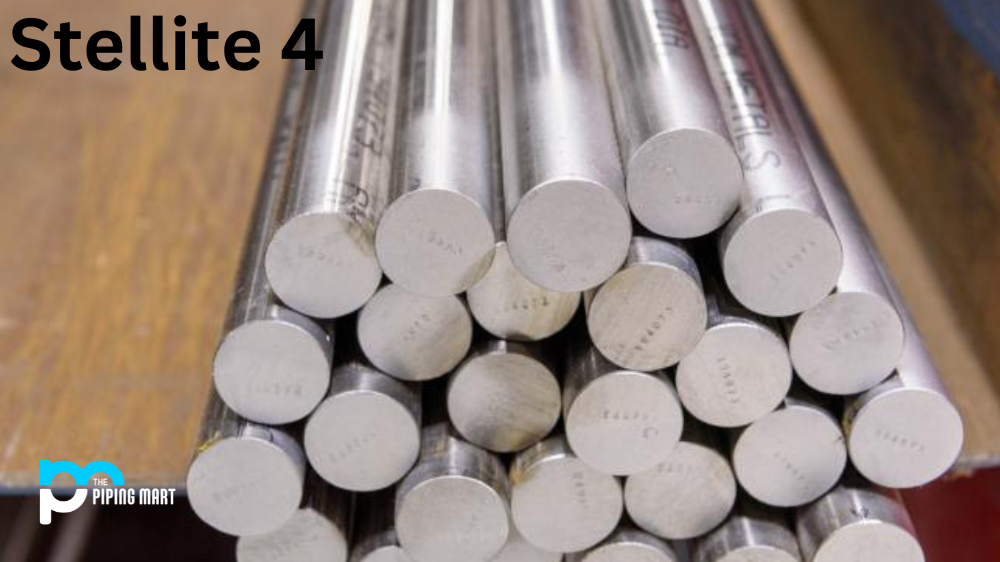304M stainless steel is one of the most versatile and popular types of stainless steel used in a variety of industries. This type of stainless steel is known for its excellent corrosion resistance, heat resistance, heat treatment capabilities, and machinability. It is also capable of being welded with relative ease. Let’s take a closer look at 304M stainless steel and explore its composition, chemical properties, physical properties, uses, corrosion resistance, heat resistance, heat treatment capabilities, machining process, and welding instructions.
AISI 304M Composition
The composition of grade 304M includes iron (Fe), chromium (Cr), nickel (Ni), manganese (Mn), silicon (Si), molybdenum (Mo), phosphorus (P) and sulfur (S). The Cr content ranges from 18-20%, while Ni content can range from 8-12%. Other components include Mn at 2%, Si at 0.75%, Mo at 0.45-0.6%, P at 0.045%, and S at 0.03%.
|
% |
304 |
304L |
304H |
|
C |
0.0 – 0.07 |
0.0 – 0.03 |
0.04 – 0.08 |
|
Mn |
0.0 – 2.0 |
0.0 – 2.00 |
0.0 – 2.0 |
|
Si |
0.0 – 1.00 |
0.0 – 1.00 |
0.0 – 1.0 |
|
P |
0.0 – 0.05 |
0.0 – 0.05 |
0.0 – 0.04 |
|
S |
0.0 – 0.03 |
0.0 – 0.02 |
0.0 – 0.02 |
|
Cr |
17.50 – 19.50 |
17.50 – 19.50 |
17.00 – 19.00 |
|
Ni |
8.00 – 10.50 |
8.00 – 10.50 |
8.00 – 11.00 |
|
Fe |
Balance |
Balance |
Balance |
| N | 0.0-0.11 | 0.0-0.11 | 0.0 – 0.10 |
AISI 304M Chemical Properties
The chemical properties of SS 304M include high strength and excellent formability in low temperatures due to the addition of niobium or titanium to its alloying elements. It also has good resistance to stress corrosion cracking and pitting due to its low carbon content, which helps prevent sensitization during welding operations.
AISI 304M Mechanical Properties
304M SS is a type of austenitic stainless steel and is the most widely used grade of this material. It is known for having excellent mechanical properties and outstanding corrosion resistance, making it ideal for a variety of applications in industries such as pharmaceuticals, food production, and chemical processing. It also has a superior strength-to-weight ratio, allowing it to remain lightweight yet still be able to withstand harsh conditions without deforming or breaking. In addition, 304M Stainless Steel’s low coefficient of thermal expansion makes it an ideal choice for heat exchanger tube materials in high-temperature environments. These impressive characteristics make 304M Stainless Steel the go-to material when the job requires the utmost precision and durability.
|
Tensile Strength (MPa) |
540 – 750 |
520 – 700 |
– |
|
Proof Stress (MPa) |
230 Min |
220 Min |
– |
|
Elongation A50 mm |
45 Min % |
45 Min % |
AISI 304M Physical Properties
The physical properties of 304M Stainless Steel include good thermal conductivity, electrical conductivity as well as ductility when cold-worked or annealed. It has a density of 7.93 g/cm3 with a melting point between 1420 -1460 degrees Celsius. It has a modulus of elasticity ranging from 193 -200 GPa, an ultimate tensile strength ranging between 515 -860 MPa, an elongation percentage ranging between 40-50%, a yield strength ranging between 205 – 650 MPa, and a Brinell Hardness value between 140 – 190 BHN.
|
Density |
8.00 g/cm3 |
|
Melting Point |
1450 °C |
|
Modulus of Elasticity |
193 GPa |
|
Electrical Resistivity |
0.72 x 10-6 Ω.m |
|
Thermal Conductivity |
16.2 W/m.K |
|
Thermal Expansion |
17.2 x 10-6/K |
AISI 304M Uses
Commonly used in food processing equipment such as kettles, tanks, pots, trays, utensils, baking sheets, piping systems, conveyors, etc., it is also used in dairy production facilities for storage tanks for milk products. In addition to this, it is used for fasteners such as nuts, bolts and screws; kitchen sinks; architectural trim; pressure vessels; medical equipment such as prosthetics; automotive exhaust systems; valves; nuclear reactors; petrochemical equipment; marine applications; surgical instruments; elevators; etc.
Corrosion Resistance
Due to its low carbon content, this grade offers superior corrosion resistance compared to other grades like 316L or 317L. Its ability to resist oxidation when exposed to high temperatures makes it suitable for applications where long-term exposure to extreme temperatures is required, such as jet engine exhaust manifolds and industrial furnaces. Its chromium content provides adequate protection against attack by organic acids such as acetic acid present in vinegar solutions. It can be formed using conventional cold-forming processes without the need for post-work hardening treatments, which helps reduce costs associated with fabrication processes involving this grade.
Heat Resistance
As mentioned above, this grade offers superior oxidation resistance when exposed to high temperatures making it suitable for use in applications that are subject to extreme temperature variations over long periods of time. Additionally, it does not suffer from deformation or embrittlement even when exposed repeatedly over time, so it can be used effectively in both hot working operations, such as forging or pressing and cold working operations, such as bending, rolling or punching, without any issues.
Heat Treatment
Heat-treating 304M Stainless Steel is a critical part of the manufacturing process for many components. This alloy responds to heat treatment in unique ways, allowing it to be moulded and worked into almost any shape. During the process, the material is heated at extremely high temperatures and cooled rapidly, giving it extraordinary strength and durability. The heat treatment turns this alloy from soft to durable and from moldable to strong enough for many heavy-duty applications. Careful consideration needs to be taken to get this process right – if not done correctly, defects can occur, which may negate its extreme strength and flexibility. Moreover, optimizing the heat treatment of 304M stainless steel can provide solutions in other areas, such as corrosion resistance or increase its longevity.
Machining
Working with 304M stainless steel requires high skill and precision due to its complex composition and the superior machined surfaces it is capable of producing. Employing quality processes, such as automated SPC data collection and a controlled environment, are essential in order to deliver parts that meet customer requirements. Utilizing cutting-edge equipment when machining 304M stainless steel helps increase speed, accuracy, and value for the customer. Companies that specialize in machining 304M stainless steel understand the importance of using rapid, reliable methods which deliver exceptional results within an acceptable time frame. With an experienced team of technicians and modern machinery, users are able to make use of this unique material for any wide array of industries that demand superior quality parts.
Welding
Welding of 304M Stainless Steel is essential in many industrial applications, as it ensures a safe connection and reliable performance. This type of steel has excellent corrosion resistance and strength and is highly resistant to deformation when it is heated. One downside to welding 304M Stainless Steel is its tendency to have considerable shrinkage and cracking on cooling. To avoid these issues, methods like pre-heating prior to welding and low heat input should be employed; this will help reduce the likelihood of problems during the welding process. Additionally, it is important to monitor the weld for deformations afterwards for extra assurance that something hasn’t gone wrong with the joint. Despite the considerations regarding heat sensitivity, when done properly, welds on 304M Stainless Steel can be very secure and provide lasting connections under repeated strain without failure.
Conclusion
As we have seen above, 304M Stainless Steel is an incredibly versatile material that can be used across many different industries due to its excellent corrosion resistance, heat resistance, heat treatment capabilities, machinability and weldability characteristics. It’s highly recommended for anyone looking for a reliable material that won’t require extra maintenance over time due to wear & tear caused by harsh environmental conditions that might affect other materials adversely over prolonged periods of time. Whether you need your parts fabricated quickly or you want something more durable than other materials available today, then make sure you consider opting for 304M Stainless Steel!

Pipingmart is a B2B portal that specializes in metal, industrial and piping items. Additionally, we share the latest information and information about materials, products and various types of grades to assist businesses that are involved in this business.




